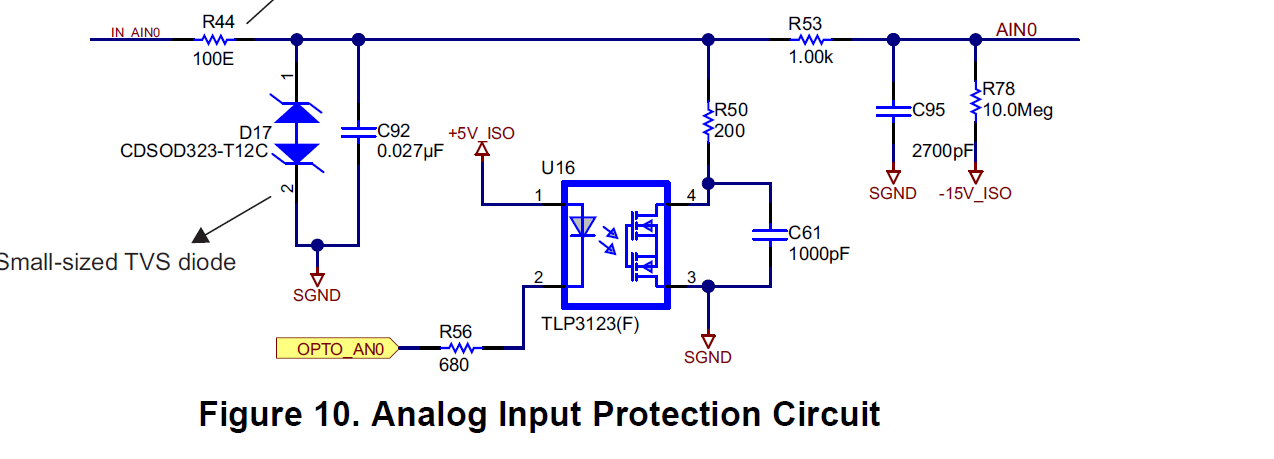Hi
We are designing Analog input module for following requirements.
Universal Input
Channels 4
Resolution 16-bit
Accuracy ±0.1% of FSR (Voltage) ±0.2% of FSR (Current)
Input Type and Range
±150mV, ±500mV, ±1V, ±5V, ±10V, 0~150mV, 0~500mV,
0~1V, 0~5V, 0~10V,
0~20mA, 4~20mA, ±20mA
Input Impedance > 10M Ω (Voltage)
Isolation 3,000 Vrms
For above requirements we are referring TIDA-01333, TIDA-00170, TIDA-00764 designs. which is the suitable design for our requirements. Please suggest suitable reference design.
Thanks
Veera


